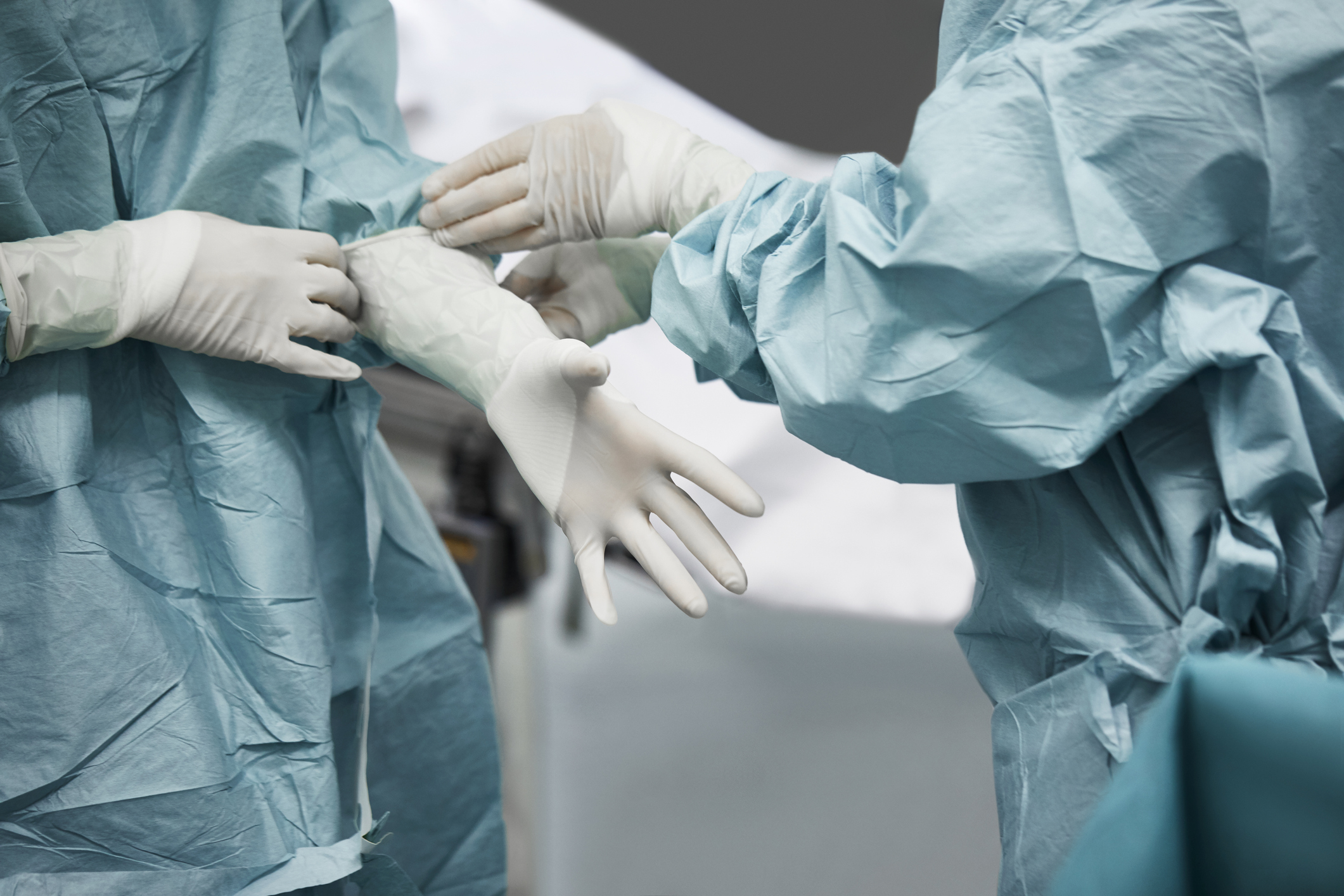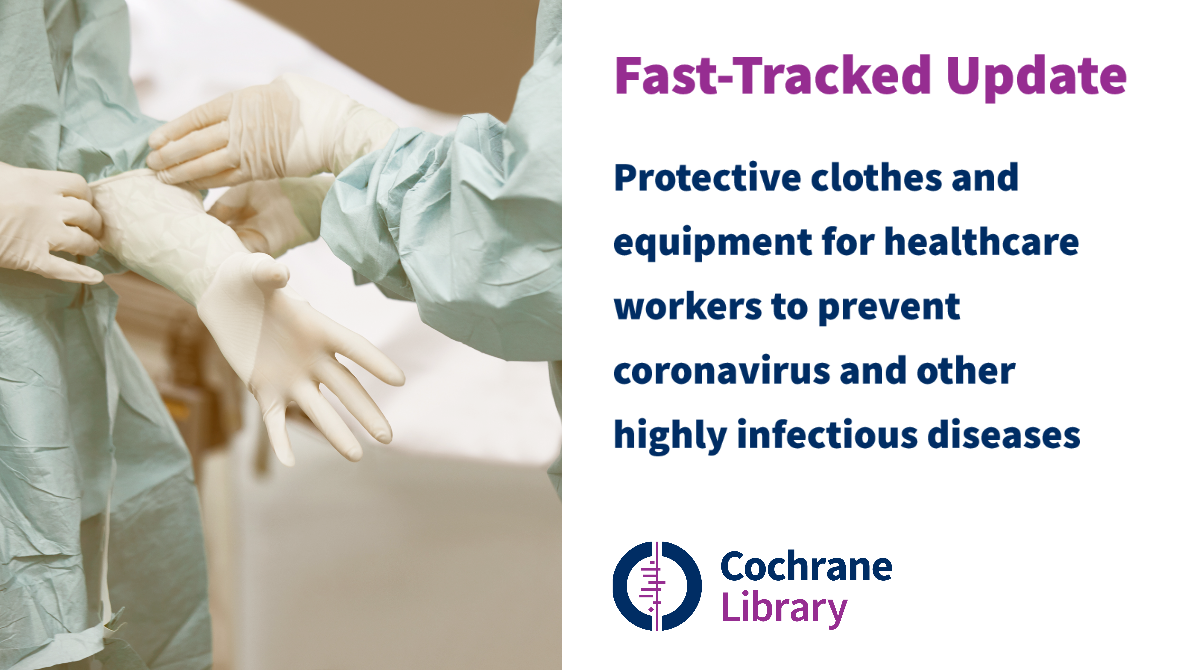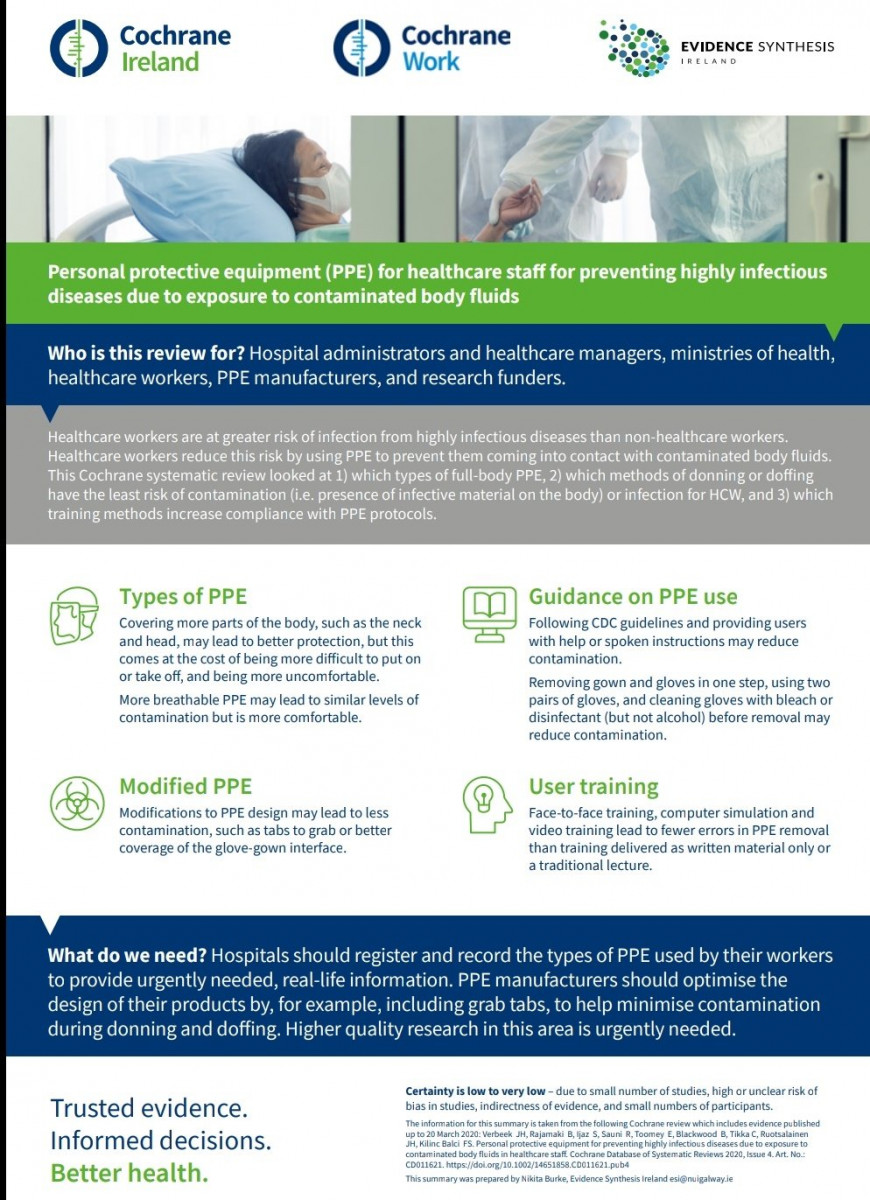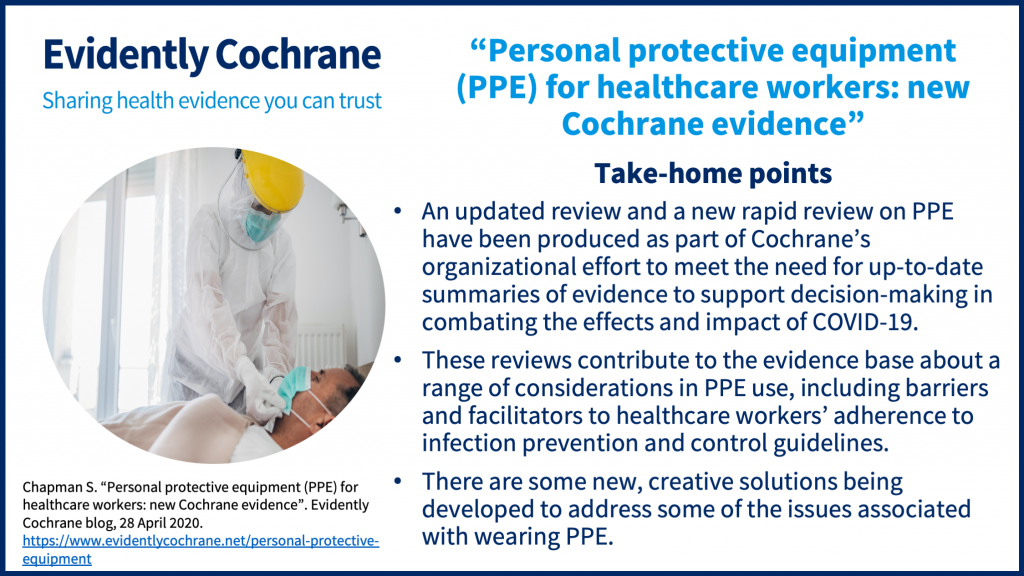
Cochrane fast-tracked multiple updates to a Cochrane Review on personal protective equipment for healthcare workers: 'Personal protective equipment for preventing highly infectious diseases due to exposure to contaminated body fluids in healthcare staff.'
We know that basic science research and innovation will be vital in containing and mitigating the effects of the rapidly evolving COVID-19 pandemic. Cochrane is responding promptly to this unprecedented global health crisis by answering the time-sensitive needs of health decision makers, as fast as possible while simultaneously ensuring that the scientific imperative of methodological rigor is satisfied. Part of this is making sure that relevant Cochrane systematic reviews are up-to-date with emerging evidence. This review on personal protective equipment was first published in 2016, updated in 2019, and now the second fast-tracked update brings the latest evidence into the analysis.

Healthcare workers are at risk of serious infections such as coronavirus (COVID-19), severe acute respiratory syndrome (SARS) and Ebola virus. One way of preventing infection is to use personal protective equipment (PPE), such as protective clothing, gloves, masks and breathing equipment (respirators), and goggles. This prevents the worker from becoming contaminated with droplets from coughs, sneezes, or other body fluids from infected patients and from contaminated surfaces. It is unclear which type of equipment protects best. Contamination also often occurs when PPE is removed. We do not know the safest way of taking off PPE, and we do not know the best way to train workers.
Video by Beth Adams
This fast-tracked update from Cochrane Work found 24 studies with 2278 participants. The studies compared types of protective clothing, modifications of protective clothing design, ways to put it on and take it off, and different ways to train healthcare workers in its use. Eighteen of the studies used a fluorescent marker or a harmless virus or bacteria to simulate what happens when healthcare workers are exposed in hospitals or other healthcare settings. All studies had either an unclear or a high risk of bias.

View and download this infographic
Various types of clothing compared
Covering more parts of the body may lead to better protection. This comes usually at the cost of more difficult donning or doffing and less user comfort. It may lead to even more contamination. The use of a powered, air-purifying respirator with coverall may protect better than a N95 mask and gown but is more difficult to put on. A long gown may be the best choice of protection and is easy to remove. Coveralls may be more difficult to remove. Gowns may protect better against contamination than aprons. Protective clothing made of more breathable material may not lead to more contamination, but it may have greater user satisfaction. Contamination was common in half of the studies despite improved PPE.
Modifications compared to standard protective clothing design
The following modification of standard protective clothing design may lead to less contamination: gowns with gloves attached at the cuff that were taken off together, better coverage of the glove-gown interface and gowns with tighter fit at the neck. Also adding tabs to gloves and face masks to grip when removing the protective clothing may lead to less contamination. One study did not find that there were fewer errors in putting gowns on or off correctly modification.
Various methods of removing clothing compared
The following additions to protective clothing or changes to the guidance for their use may lead to less contamination: following CDC guidance for apron or gown removal compared to individual removal, one step removal of gown and gloves, using two pairs of gloves, instructions for doffing contaminated protective clothing, sanitizing gloves with bleach or quaternary ammonium (but not alcohol).
Active training
Face to face training and computer simulation of the use of protective clothing led to fewer errors compared to educational material only. In one study, participants who watched a video had better scores when tested compared to a traditional lecture on the use of protective clothing.
Certainty of the evidence
We judged the certainty of the evidence to be low to very low because of limitations in the studies, the studies simulated real infection, and they had a small number of participants.

Read the Evidently Cochrane blog post
What do we still need to find out?
There were no studies on the effects of goggles or face shields. Researchers need to agree on the best way to simulate exposure. Then, more simulation studies are needed with at least 60 participants, preferably using exposure to a harmless virus, to find out which type and combination of protective equipment is most protective. The best way to remove protective clothing after use is also unclear. We also need studies to find out which training works best in the long-term. Healthcare staff exposed to highly infectious diseases should have their personal protective equipment registered and be followed for their risk of infection. We urge hospitals to organise more studies and register and record the type of PPE used by their workers to provide more urgently needed real-life information.
- Read the full Cochrane Review
- Listen to the podcast
- Read the Cochrane Oral Health's post 'Personal protective equipment: a commentary for the dental and oral health care team'
- Read the Evidently Cochrane blog post 'Personal protective equipment (PPE) for healthcare workers: new Cochrane evidence'
- View and download infographic
- Visit the Cochrane Work website
- Read all the Cochrane resources and news on COVID-19

